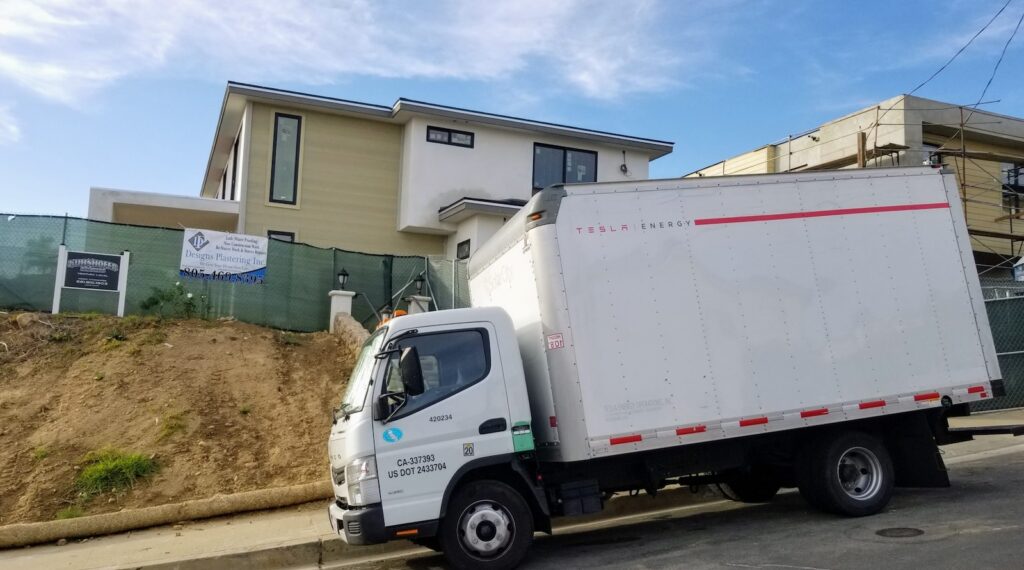
Sign up for daily news updates from CleanTechnica on email. Or follow us on Google News!
Last Updated on: 8th February 2025, 10:05 pm
Researchers at Stevens Institute of Technology in New Jersey have studied how the electrification of homes can create issues for some homeowners and how adding solar and storage affects the equation. The researchers used AI, because you’re nobody today if you don’t. Here’s the abstract of the report, which was published on January 15, 2025, in the journal Smart Cities And Society:
“As cities accelerate decarbonization through building electrification, the growing dependence on electrical systems introduces new vulnerabilities during power disruptions. While grid level resilience has been widely studied, household scale impacts of electrification remain poorly understood. In this study, we develop a vulnerability assessment framework that combines machine learning classification with high resolution synthetic energy data from 129,000 U.S. single family homes. Our two stage approach first identifies household electrification levels with over 80 percent accuracy and then quantifies outage vulnerability using a composite risk index that incorporates electrification profiles, backup capabilities, and climate exposure.
“A simulated case study reveals that fully electrified households face significantly higher risks during winter storms, with a 60 percent greater vulnerability compared to mixed energy homes. In contrast, solar equipped electrified households exhibit enhanced resilience during heat waves, leveraging renewable energy resources to mitigate risks. By highlighting critical dependencies and adaptive capacities, our framework emphasizes the importance of energy diversity and distributed energy resources in reducing outage vulnerabilities. This scalable, non-intrusive methodology provides actionable insights for policymakers and urban planners to design climate-resilient urban energy systems.”
The lessons learned from this research come at a crucial time. With more than a quarter of US homes already fully electric and solar installations set to triple during the next five years, understanding vulnerabilities has become critical for emergency planning and public safety. “We’re racing toward electrification to combat climate change, but we must also understand the risks involved,” says Stevens professor Philip Odonkor, who led the research project. “So, what happens to these solar and electric homes when the power goes out?”
Together with two summer interns, Odonkor set out to find an answer to that question. The study explores the future of the electrification of American homes by leveraging AI and analyzing Department of Energy building data. The team examined the energy patterns of 129,000 single-family homes in eight states to discover the hidden energy “signatures” that distinguish fully electrified homes — those powered entirely by electricity — from those that use a mix of energy sources. They didn’t stop there, however. For those identified as mixed energy homes, the team also worked to pinpoint exactly which appliances have made the shifts to electric power and which haven’t.
After processing and analyzing the dataset, Odonkor’s team found that homes’ energy signatures were not only distinguishable, but they made critical insights into the resilience of individual homes. Solar powered homes, for example, demonstrated impressive resilience during summer heat waves. However, they proved remarkably vulnerable during winter storms. In fact, fully electrified homes were nearly three times more vulnerable to winter outages, compared to those drawing power from mixed energy sources. “Think about Texas in 2021, when millions lost power during a winter storm,” Odonkor explains. “As more homes go fully electric, we need to prepare for these scenarios. Solar panels help in summer, but they can’t meet the intense heating demands that occur during winter blackouts.”
The study wasn’t only important because of its findings, it was also notable for the innovative AI-powered methods used to conduct the analyses. Odonkor’s team developed novel machine learning models capable of identifying an individual home’s energy systems and vulnerabilities with over 95 percent accuracy using only its energy consumption patterns. The new approach enables utilities and emergency responders to pinpoint at-risk households across entire neighborhoods, without the need for invasive surveys or inspections. “Until now, we actually had to go door-to-door to determine if a home was fully electric,” notes Odonkor. “Now, we can automatically identify the most vulnerable homes while still safeguarding people’s privacy. This will shift the way we prepare for and respond to extreme weather, enabling faster, and more targeted action when it’s needed most.”
Electrification For Homes And Communities
The study’s potential benefits extend beyond empowering individual homeowners. As cities work to build climate resilience, these new tools could help community emergency service units prioritize responses during outages. It could also assist urban planners in the long term development of more resilient housing stock and neighborhoods. That’s vital because communities nationwide are grappling with a one-two punch of aging power grids subjected to more frequent episodes of severe weather. As America transitions to more electric homes to cope with changes in the climate, the findings from Odonkor’s team serve as a warning that we will need to implement strategies that protect vulnerable solar and electric households during winter emergencies. “The path to sustainable cities isn’t just about going green; it’s about staying resilient,” he emphasizes. “As we shape the future of urban housing, understanding vulnerabilities isn’t just a luxury — it’s essential to keeping communities safe.”
The researchers characterize resilience as a synergy of technical, adaptive, and transformative capacities. For example, solar panels provide a technical means to maintain essential services during outages, but their effectiveness depends on complementary adaptive behaviors such as load shifting. This framework suggests that resilience emerges from the interaction of these capacities rather than being defined by any single factor.
Reducing Carbon Emissions From Homes
At the household level, electrification has been shown to reduce greenhouse gas emissions significantly, with fully electrified homes achieving emission reductions of up to 78 percent as compared to mixed-fuel alternatives. Those environmental gains often come with heightened exposure to outage risks. The 2021 Texas power crisis revealed how extreme weather events could expose vulnerabilities in electrified households for those lacking sufficient backup power solutions. The integration of distributed energy resources such as solar and battery storage has emerged as a critical factor in household resilience. Studies demonstrate that these technologies can enhance reliability during outages, though their effectiveness varies with geographic location, climate, and system design. Seasonal dependency, particularly during winter storms, complicates their implementation and underscores the importance of careful planning.
Socio-economic factors significantly influence both the adoption of electrification technologies and the vulnerabilities they create. Low-income households face barriers to adopting resilience-enhancing technologies such as battery storage, which exacerbates disparities in vulnerability to power disruptions. Community-level resilience is often bolstered by social networks and resource pooling, which amplify household adaptive capacities during crises. These findings illustrate the relationship between electrification and vulnerability is highly context dependent. Effective resilience strategies must integrate technological and behavioral measures, with an acute awareness of socio-economic inequities that shape access to adaptive resources.
The takeaway from this research is that the “electrify everything” movement may overlook some considerations. A careful analysis and understanding of the local economic and social environment for each individual homeowner is needed in order to maximize the benefits a homeowner can expect by adding heat pumps and installing solar panels. Another way to put it is there is no “one size fits all” scenario any more than we can say a particular electric vehicle will meet the needs of every motorist. Making decisions based upon the best available information will ensure an electrification plan delivers the intended benefits.
Hat tip to Dan Allard
Chip in a few dollars a month to help support independent cleantech coverage that helps to accelerate the cleantech revolution!
Have a tip for CleanTechnica? Want to advertise? Want to suggest a guest for our CleanTech Talk podcast? Contact us here.
Sign up for our daily newsletter for 15 new cleantech stories a day. Or sign up for our weekly one if daily is too frequent.
CleanTechnica uses affiliate links. See our policy here.
CleanTechnica’s Comment Policy

